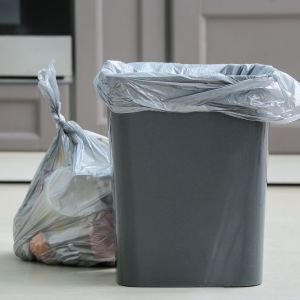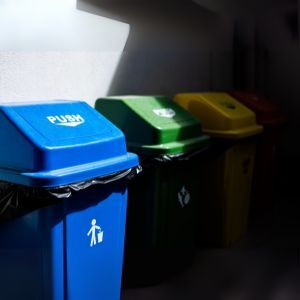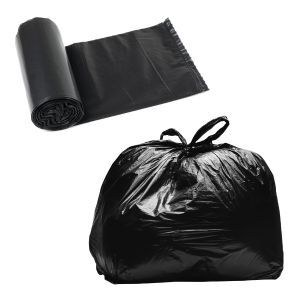What’s the Difference Between a Bin Bag and a Bin Liner?
While the terms "bin bag" and "bin liner" are often used interchangeably, they can serve slightly different purposes depending on context and usage. This article explores the key differences between the two, outlines which types are best for different environments, and helps you choose the most sustainable and suitable option for your needs.
Bin Bag vs Bin Liner: Definitions and Usage
When to Use a Liner vs a Bag
A bin liner typically refers to a lightweight plastic bag designed to line the inside of a bin to prevent direct contact with waste. These are common in office, bathroom, and kitchen settings where maintaining cleanliness is a priority. A bin bag, on the other hand, is often used to refer to a thicker, more durable plastic bag that can be removed from a bin and tied shut for disposal. Both liners and bags serve the same purpose of containing waste, but they differ in thickness, strength, and intended use.
Product Types Available in New Zealand
In New Zealand, both terms are widely used and often overlap in product descriptions. However, bin liners are usually sold in lighter gauges and are often clear or white for visibility, while bin bags are usually black or coloured and made for heavier waste, including garden or commercial refuse.
Materials, Strength, and Sustainability
Which Option is More Eco-Friendly?
The environmental impact of both options depends heavily on the materials used. Compostable or biodegradable liners and bags are better choices for reducing landfill waste. Thin liners use less material overall, which can be beneficial in low-waste settings. Compostable bags, which are made from plant-based materials rather than oil-based plastics, provide an eco-friendly alternative. However, it's important to be mindful that compostable bags break down in heat, sunlight, and moisture, so their use needs to be carefully considered, especially for environments where exposure to these conditions could cause the bags to fail prematurely.
Comparing Strength for Commercial Use
Bin bags are generally stronger and more suitable for heavy-duty applications, such as commercial kitchens, construction sites, or facilities that generate sharp or bulky waste. Bin Liners are typically better for light-duty uses, including paper waste or general office waste, where strength is less of a concern.
Choosing the Right Product for Your Needs
Tailored Solutions for New Zealand Businesses
Selecting the right bin product depends on the type of waste generated, the volume, and how often the bin is emptied. Workplaces with high volumes of food waste may benefit from compostable bin bags, which need to be changed frequently to avoid the risk of the bags breaking down before disposal. On the other hand, offices that primarily dispose of paper waste may only require thin liners. Understanding your waste profile can help you choose the most appropriate and cost-effective solution, while also minimising environmental impact.
Linking You to the Best Planet Friendly Options
It’s important to source products that align with your environmental policies. Insinc Products offer bin bags and liners that are made from recycled content or meet compostable certifications. Comparing specs and material types ensures you find the most planet-friendly fit.
Frequently Asked Questions
Is there a cost difference between bin liners and bin bags?
Yes. Bin liners are generally less expensive due to thinner material, while bin bags cost more due to their higher durability and material volume.
Which is stronger?
Bin bags are typically stronger and better suited for heavy or sharp waste. Liners are best for dry, lightweight waste.
Can I use bin bags as liners?
Yes, but it may be inefficient or costly. Using a bin bag in place of a liner may be excessive for bins that only need light protection.
Helpful Resource
Further Reading: Why Do My Bin Liners Keep Ripping? (And How to Fix It)
If you’re struggling with torn liners, this guide provides insights and practical tips for preventing rips and choosing the right bin liner for your needs.
Conclusion
Understanding the difference between bin bags and bin liners helps in making better purchasing and waste disposal decisions. Whether you're aiming for cost efficiency or environmental responsibility, choosing the right product makes all the difference in managing workplace waste effectively.
Posted: Tuesday 8 July 2025


